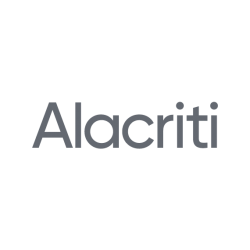Real-time payment solutions like the FedNow® Service and the RTP® network taking center stage don’t mean that traditional rails like ACH (Automated Clearing House) are being left behind. ACH remains a foundational component of the U.S. payments ecosystem—especially for credit unions.
ACH powers everything from payroll and government disbursements to recurring loan payments and B2B transactions. It’s reliable, cost-effective, and still growing. In 2024, the ACH Network experienced a notable increase in both payment volume and value. Overall, ACH volume rose 6.7% to 33.6 billion payments, and the value of those payments increased 7.6% to $86.2 trillion. Same Day ACH, a faster payment method within the ACH Network, also saw significant growth, with a 45.3% increase in volume.
However, as expectations for speed rise, credit unions must reimagine their approach to ACH processing. Modernizing ACH is not just about keeping pace—it’s about staying competitive and unlocking new efficiencies while reducing risk.
ACH is evolving—and so are member expectations
Originally built as a batch-based, store-and-forward system, the ACH Network has undergone continuous improvement since its inception in the 1970s. Same Day ACH, first introduced in 2016, has evolved to support credits and debits of up to $1 million with multiple settlement windows throughout the day. Discussions are now underway to expand this with later windows and weekend processing.
Despite these advancements, many credit unions still operate with legacy infrastructure. These older systems often lack end-to-end automation, rely on manual exception handling, and require complex workarounds to meet modern compliance standards. The result? Higher costs, slower turnaround times, and increased risk.
In a webinar hosted by Alacriti and the Federal Reserve, 37.5% of participants cited faster transactions as the top benefit of ACH modernization, followed closely by streamlined payment processes (33.3%). These findings reflect the growing demand for a more responsive ACH environment.
The case for ACH modernization
ACH’s continued dominance doesn’t negate the need for transformation. In fact, its broad use makes it a high-impact target for operational improvement. Here’s what’s at stake for credit unions that delay:
- Rising operational costs: Manual processing of exceptions, returns, and NOCs (Notices of Change) consumes time and staff resources.
- Compliance and risk gaps: Adapting to Nacha rule changes and OFAC screening requirements becomes more complex without modern compliance tools.
- Integration hurdles: Older systems often can’t support real-time validation or integrate seamlessly with digital banking platforms and fintech partners.
- Competitive pressure: Institutions that offer more efficient, automated ACH capabilities will be better positioned to attract and retain members—especially businesses.
Credit unions face unique challenges
As member-owned institutions, credit unions must balance cost efficiency with high-touch service. Unfortunately, legacy systems make that balance difficult. Many credit unions struggle with fragmented operations and a lack of real-time data across payment rails.
Without a centralized view of ACH activity, reporting becomes cumbersome, and strategic decision-making suffers. Manual workflows—such as uploading risk files or manually correcting invalid account numbers—also leave room for human error and fraud.
For example, a payment to a joint account that includes a deceased member often has to be rejected manually. Without intelligent exception handling, these types of cases slow down operations and frustrate members.
What modern ACH infrastructure looks like
A modern ACH solution should go beyond digitizing existing workflows. It should provide:
- End-to-end automation: Automate origination, returns, reversals, dishonors, and exception management with rule-based workflows.
- Built-in compliance: Real-time OFAC screening, exposure controls, and return rate monitoring reduce reputational risk.
- Seamless integration: Open APIs and out-of-the-box connectors that ensure fast deployment with digital banking platforms and core systems.
- Advanced reporting: A unified dashboard for cross-rail performance tracking, reconciliation, and strategic insights.
- Real-time controls: ACH authorization rules that adapt by payment type, user role, dollar amount, or client segment.
Alacriti’s Orbipay Payments Hub for ACH offers these capabilities and more. The platform supports ISO 20022 messaging natively, integrates directly with FedLine Direct® (no middleware required), and provides real-time fraud screening, liquidity management, and intelligent payment routing.
Member benefits are real—and measurable
Modern ACH processing isn’t just about internal efficiencies. It also delivers measurable benefits to members:
- Faster access to funds: Real-time origination and posting accelerate payroll, bill pay, and loan disbursements.
- Reduced errors: Automated validation checks reduce the risk of rejected or misdirected payments.
- More payment options: Support for recurring payments and reusable templates gives members greater flexibility.
- Fewer delays: Exception management means fewer delays and less back-and-forth when something goes wrong.
Ultimately, a streamlined ACH experience helps credit unions better compete—not only with other FIs but with fintechs that have set the bar for digital-first service.
ACH plays a role in the modern payments mix
It’s important to note that ACH doesn’t compete with faster rails like RTP and FedNow. Rather, it complements them. Alex Romeo from the Federal Reserve emphasized this during the webinar, noting that in the U.K.—where instant payments are widespread—traditional rails like ACH (Bacs) and wires (CHAPS) have not lost volume.
Each rail serves a purpose. FedNow settles in seconds, Fedwire in minutes, and ACH in hours. The key is flexibility: giving members the right tool for the job and orchestrating those choices efficiently.
Research from Datos Insights shows that ACH remains one of the most used payment methods across business functions, especially for payroll and utility payments. Even as real-time options grow, ACH continues to be the go-to for cost-effective, recurring transactions.

Preparing for what’s next
Looking ahead, upcoming rule changes from Nacha and the industry-wide shift to ISO 20022 messaging will further accelerate the need for modern infrastructure. For credit unions, this is both a challenge and an opportunity.
The challenge lies in navigating change while continuing to serve members seamlessly. But the opportunity is significant: modern ACH infrastructure can reduce manual work, support future growth, and position your credit union as a leader in digital service delivery.
ACH isn’t going anywhere—but how your credit union uses it must change. Embracing ACH modernization can reduce costs and manual labor, strengthen compliance and fraud protection, deliver a better member experience, and future-proof your operations for ISO 20022 and beyond. As things change, staying ahead doesn’t mean chasing every new rail—it means optimizing the infrastructure that already serves as your backbone.
To learn more about modernizing ACH with Orbipay Payments Hub, visit: https://www.alacriti.com/knowledge-hub/blog/ach-payment-processing-solutions-explained.







